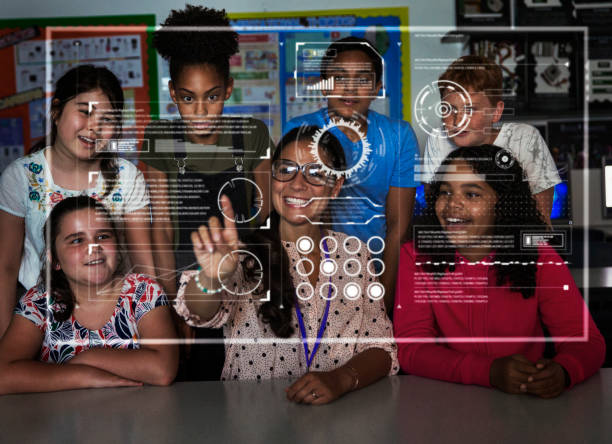Technology is no longer a luxury in today’s classrooms, It is a necessity. From interactive whiteboards to AI-driven tutoring apps, integrating technology in K–12 education has transformed how students learn and how teachers teach. But technology is most powerful when used with purpose, not just for flash, but for function.
In this article, we’ll explore how educators across the U.S. are effectively using tech tools to enhance student engagement, foster digital literacy, and personalize instruction. You’ll find practical strategies, classroom examples, and real-world tips that align with both curriculum standards and 21st-century skills. Whether you’re a classroom teacher, administrator, or parent, you’ll gain valuable insights into making technology integration meaningful and impactful in 2025 and beyond.
What Does Technology Integration Mean in K–12?
Technology integration refers to the seamless use of digital tools, hardware, software, and online platforms to enhance learning outcomes. It’s not about replacing teachers but empowering them to deliver instruction more effectively.
Why Technology Integration Matters in 2025
According to a 2024 report by ISTE, 87% of school districts in the U.S. have adopted at least one digital-first initiative. Integrating technology supports:
- Engagement through interactivity
- Equity through access
- Flexibility through hybrid learning
Benefits of Technology in K–12 Classrooms
Immediate Feedback
Tools like Google Forms or Quizizz provide real-time assessment.
Collaboration
Apps like Padlet and Google Docs enable synchronous teamwork.
Accessibility
Speech-to-text and screen readers support students with special needs.
Top EdTech Tools Used in 2025
Here are tools educators rely on most:
| Tool | Purpose | Grade Levels |
|---|---|---|
| Kahoot! | Game-based learning | All grades |
| Nearpod | Interactive lessons | K–12 |
| Edpuzzle | Video quizzes | 4–12 |
| Canvas | Learning Management System | Middle & High School |
LSI keywords: digital whiteboards, learning platforms, formative assessment
Device Programs
One-to-one device programs ensure every student has a personal device (like a Chromebook or iPad). This promotes equal access to digital content and encourages independent learning.
In 2025, 71% of U.S. schools run a 1:1 program.
Blended Learning Models
Blended learning combines in-person teaching with online resources. Popular models include:
- Station rotation
- Flipped classroom
- Flex model
These models allow for differentiation, more time for practice, and teacher-student conferencing.
Personalized Learning Through AI
AI-powered platforms like DreamBox or Khan Academy tailor content to individual student needs using adaptive algorithms.
Benefits:
- Custom pacing
- Mastery-based progression
- Data-driven insights for teachers
Bold LSI: adaptive learning, intelligent tutoring systems
Gamification and Student Motivation
Gamification uses game elements in non-game contexts. It can look like:
- Badges for completing tasks
- Leaderboards for participation
- Avatars or storyline progress
This approach boosts motivation and retention by making learning fun.
Using VR and AR in Classrooms
Virtual Reality (VR) and Augmented Reality (AR) bring abstract concepts to life:
- AR apps overlay information on real-world images
- VR tours let students “visit” Mars, ancient Egypt, or inside a cell
These tools improve spatial understanding and engagement.
Project-Based Learning with Technology
Technology allows students to create:
- Digital presentations
- Interactive timelines
- Podcasts and videos
This aligns with real-world, authentic learning and fosters collaboration, communication, and creativity.
Flipped Classroom Approach
In a flipped classroom, students watch lectures at home and do “homework” in class.
Why it works:
- Maximizes class time for practice
- Encourages deeper engagement
- Promotes peer interaction
LSI keywords: asynchronous learning, instructional videos, flipped instruction
Digital Citizenship and Online Safety
Tech-savvy students must also be responsible digital citizens.
Teach students about:
- Cyberbullying
- Data privacy
- Source credibility
Tools like Common Sense Education offer free curricula on internet safety.
Challenges in Tech Integration
While promising, tech integration isn’t without hurdles:
- Infrastructure issues
- Teacher training gaps
- Screen time concerns
Pro Tip: Start with one tool, build confidence, and scale thoughtfully.
How Teachers Can Get Started
- Choose a goal (e.g., increase engagement).
- Pick one tool to try for a week.
- Join a PLN (Professional Learning Network) on Twitter or Facebook.
- Reflect and revise based on student feedback.
LSI keywords: teacher tech training, edtech onboarding, PD for educators
Future Trends in K–12 EdTech
Looking ahead, expect more:
- AI co-pilots for teachers
- Voice assistants for personalized help
- Blockchain credentials for student work
The classroom of tomorrow is interactive, data-rich, and student-centered.
Read Also: Top STEM Activities for K–12 Students in 2025
Conclusion
Integrating technology in K–12 education is about more than devices, It is about mindset. When used intentionally, digital tools help students become more engaged, independent, and future-ready. Whether it’s through gamified learning, virtual labs, or adaptive platforms, the power of technology lies in how it supports deeper learning and equity.
Teachers are the heart of successful tech integration. With support, training, and a growth mindset, educators can create meaningful digital experiences that prepare students for life beyond the classroom. As we move further into 2025 and beyond, embracing thoughtful innovation will continue to be the key to thriving schools and empowered learners.
FAQs
1. What is the best way to integrate technology in a K–12 classroom?
Start with a learning goal and choose one tool that enhances engagement or understanding.
2. Which devices are most used in schools today?
Chromebooks and iPads are the most common due to affordability and easy management.
3. How does technology improve student outcomes?
It offers personalized learning, real-time feedback, and increased engagement.
4. What are some free tech tools for teachers?
Try Google Workspace for Education, Kahoot!, Padlet, Flip, and Canva for Education.
5. How can teachers stay updated on EdTech trends?
Join educator communities online, attend webinars, and follow trusted EdTech blogs or ISTE.
